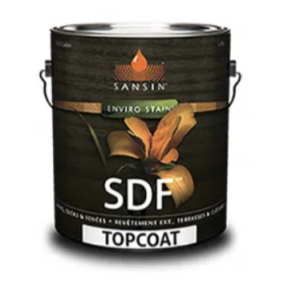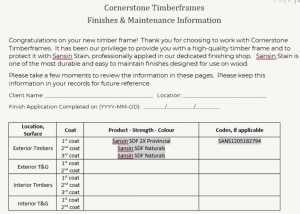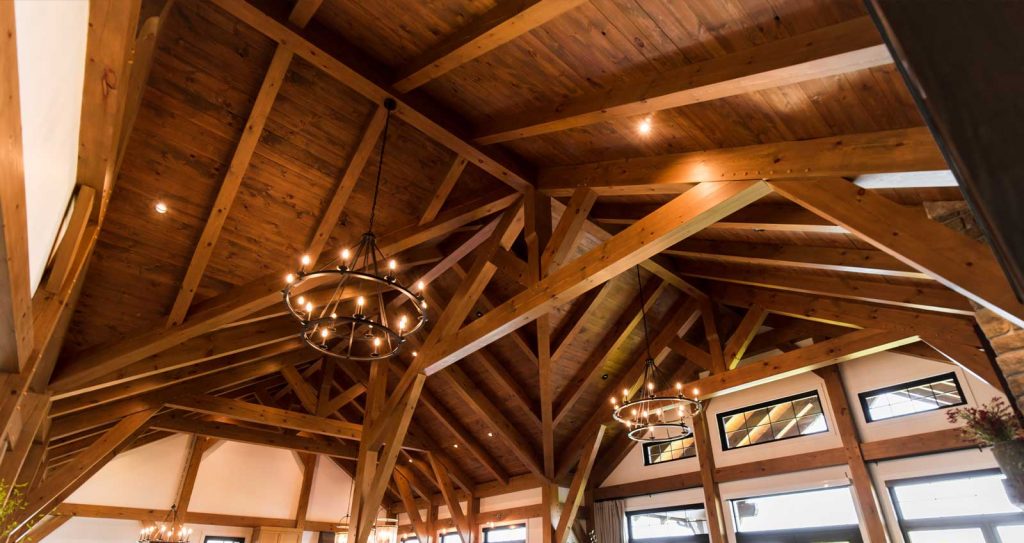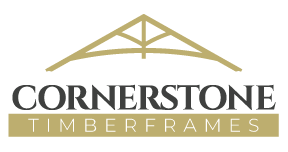The Building Blocks of Mass Timber
The spheres of architecture and construction are abuzz with the new ways that timber can be used in larger and higher buildings. “Mass Timber” provides faster builds, lighter foundations, more appealing spaces, and higher lease rates. It’s bringing heavy timber back to the forefront of modern design thanks to simple innovations in wood.
Let’s take a quick look at the two main ingredients in mass timber: glue-laminated timber (GLT or glulam), and cross-laminated timber (CLT).
Glulams have been around for over 100 years and grew rapidly in popularity and use in North America following WWII. Their first “golden age” occurred in the 1960’s when they were specified by architects in many civic, institutional and church projects. Today, a second golden age is arriving for glulam, thanks to a new companion product: cross-laminated timber panels.
CLT’s were first used in construction in Europe in the 1990’s. They became available in North America in 2010 when Nordic Structures built its first CLT plant at Chibougamau, Quebec.
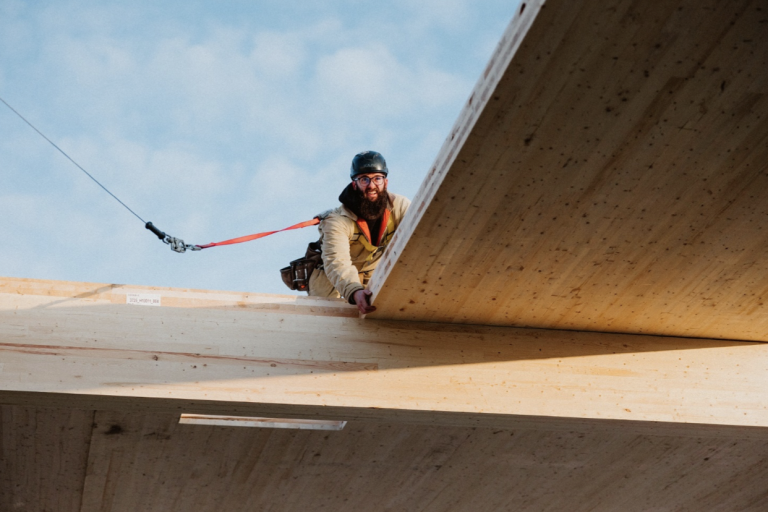
A Cornerstone installer guides a CLT to its final location atop Perimeter Aviation’s new Terminal Expansion.
Glulams and CLTs have several things in common. Both utilize small section lumber (lamella, lamstock), dried to 12% or less. Both then use a combination of glue, heat, and pressure to bond the lamella together to create very large and long timber components. The finished products have well-defined strength characteristics allowing them to span farther and carry loads greater than natural timbers.
The long lengths of both products rely on a process called “finger jointing” that takes short lamella pieces, cuts sharp zig-zags on their ends, applies glue and presses them together in a high-speed jointing line. The resulting joint is stronger than unjointed wood, increases the stability of the lamella and allows for lengths of 60’ and more.
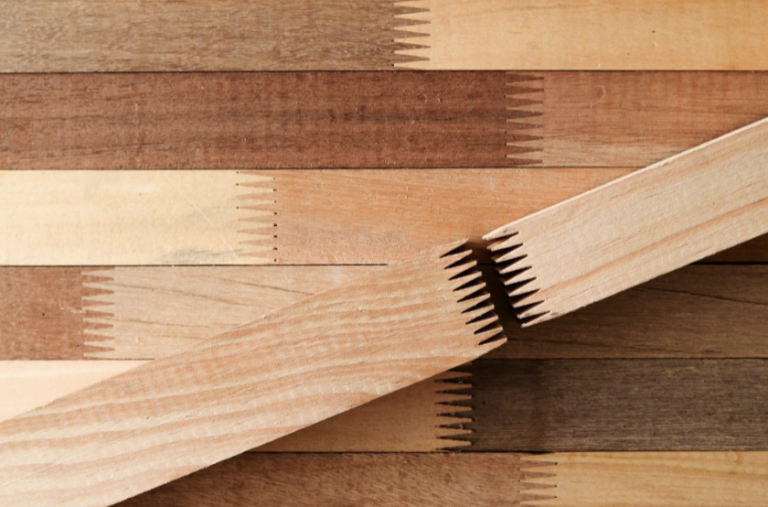
Glulams orient their lamella in one direction, creating a big beam or column out of what essentially looks like a bundle of sticks or a stack of lumber.


A set of Nordic glulam beams and arches are prepared at the Cornerstone finishing shop.
The CLT’s innovation seems so simple: orienting lamella layers crossways to each other. But that’s genius, taking an existing technique and using it to make something no one has yet imagined.
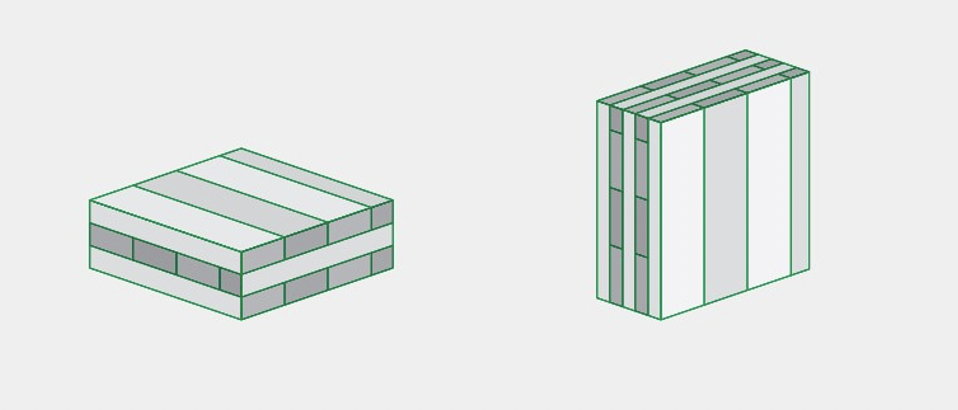
CLT lamellae are arranged with each layer running perpendicular to its neighbours to create bending strength in two directions.

In many mass timber structures, glulams are used as columns and beams to support CLT floor and roof panels.
Bergen Gardens is a 6 storey, 149-unit, seniors’ apartment in Winnipeg, Manitoba, completed in 2023 with timber fabrication and install support provided by Cornerstone Timberframes.
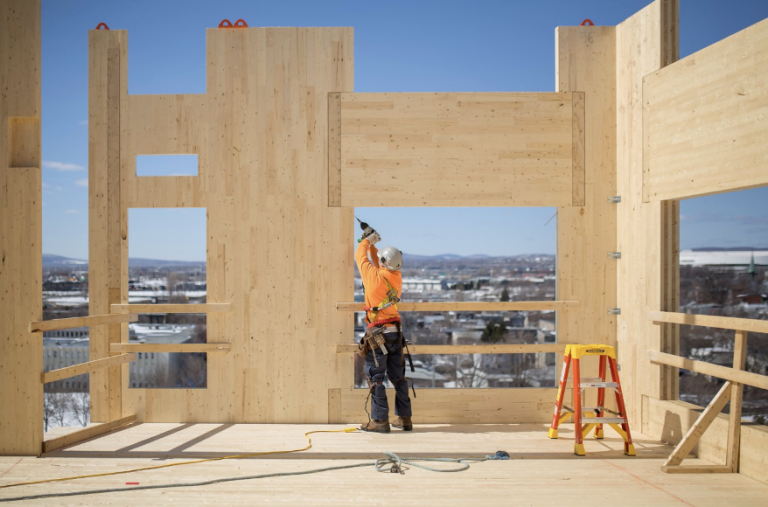
Quebec City: Origin is a 12-storey mass timber eco-apartment completed in 2017
For certain applications, CLTs can also be used on their own, with the CLTs acting as beams, columns and shear-resistant diaphragms.
Mass timber will continue to become more competitive with concrete, steel and “stick framing”. In many markets, it’s already become the obvious choice, realizing higher lease rates and faster market uptake.
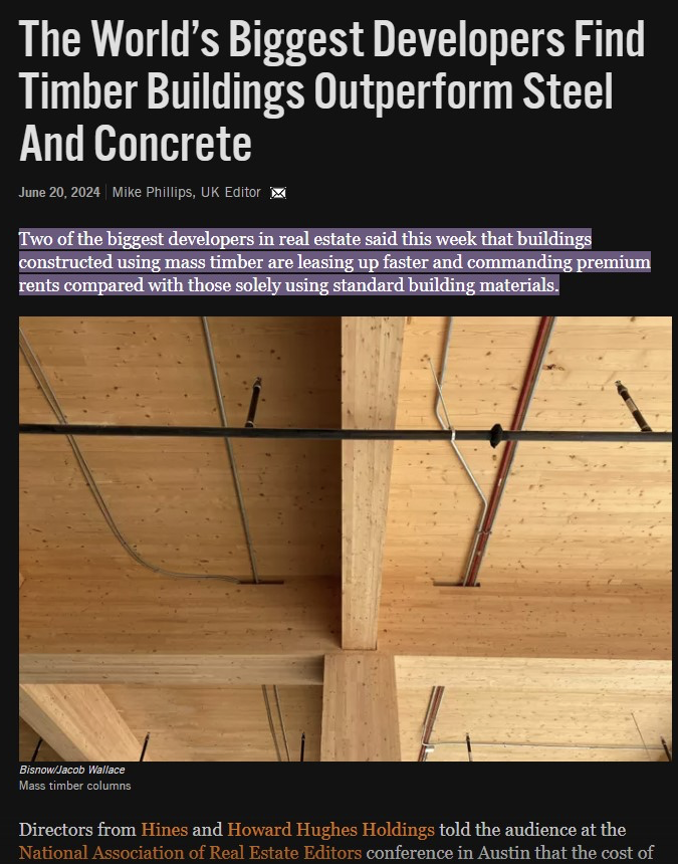
Article in BISNOW, a leading webzine for the commercial real estate industry.
Are you an architect, developer or builder with a potential mass timber project? Contact Cornerstone Timberframes today and let’s talk about how we can help you achieve big impacts with timber!
